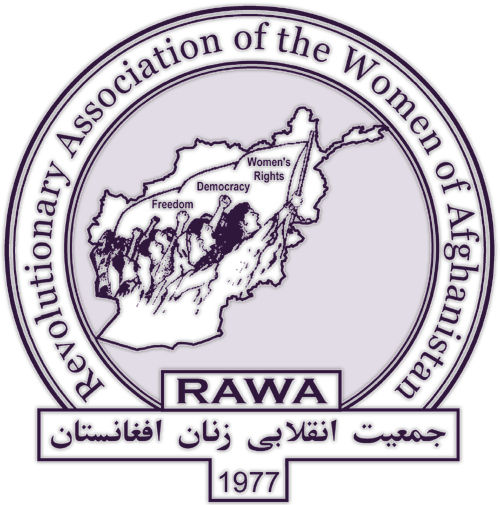Daily Report
Guatemala: ex-dictator can be tried —not sentenced
A Guatemalan court on Aug. 26 held that former dictator Efraín Ríos Montt can stand trial for genocide and crimes against humanity but cannot be sentenced because he suffers from dementia. The court held that a special closed trial can be held where all evidence and witness testimony will be presented with representative of Ríos Montt present. Ríos Montt's lawyers have an opportunity to appeal. This ruling comes after a Guatemalan court, earlier this month, ordered Rios Montt to undergo competency tests to determine whether he was fit to stand trial. In May the Guatemalan Congress approved a resolution denying any existence of genocide during the country's civil war.
Bolivia: police attack indigenous roadblocks
Bolivian National Police on Aug. 18 used batons and tear-gas to break up a road blockade launched a week earlier by Guaraní indigenous residents—and then raided the homes of several people thought to be organizers of the action. At least 10 people were detained on the highway and in the subsequent raids at Yateirenda community, Cabezas municipality, Santa Cruz department.Community leaders accused the police of "disproportionate" force in the raids, terrorizing women, children and elders. and filed a complaint with the Bolivian Permanent Assembly of Human Rights (APDHB). Local Guaraní from Takovo Mora Original Communitarian Territory (TCO) began blocking the Santa Cruz-Camiri highway to demand the right to "prior consultation" on the development of wells at the Chaco gas-fields, run by the parastatal YPFB. The company maintains that the four wells in question are all on private lands and therefore not subject to prior consultation with the TCO. The TCO, in turn, maintains that the wells are within its traditional territory and will impact their lands. (Eju!, Aug. 18; FM Bolivia, Aug. 14; Entorno Inteligente, Aug. 11)
Mexico: activist slain in missing students case
Miguel Ángel Jiménez Blanco, a leading activist in Mexico's violence-torn state of Guerrero and a vocal advocate for the families of the 43 students who went missing there in September 2014, was himself found dead on Aug. 10. His body was discovered riddled with bullets and slumped over the wheel of the taxi he owned in the pueblo of Xaltianguis, just outside Acapulco. He had led search parties after the disappearance of the students, who are now believed to have been turned over to a murderous narco-gang after being detained by police. Only one body of this missing students has yet been found. As it became increasingly clear the students had been killed, he helped organize a group called The Other Disappeared—mostly women, who meet every Sunday to search the hills for the remains of their loved ones. Since the group began work, it has unearthed 129 bodies, which were handed over to the authorities for identification. As he began to organize around the issue, Jiménez Blanco said some 300 families came forward saying they also had missing relatives. He said in a BBC interview earlier this year: "We have been saying from the start that this area is a cemetery."
Ecuador: UN expresses concern on repression
UN Special Rapporteur on the Rights of Indigenous Peoples Victoria Tauli-Corpuz issued a statement Aug. 24 expressing concern about ongoing violence against protesters by security forces in Ecuador, and called for a "just and impartial" investigation. The statement made special note of "accusations of violence against indigenous women" who participated in peaceful demonstrations. (InfoBae, Aug. 25) Repression is reported from Quito and several rural areas affected by the strike, with homes raided and residents reportedly beaten by soldiers and police in Saraguro, in southern Loja province. Among those beaten in the Amazonian province of Zamora Chinchipe was the prefect, Salvador Quishpe. (The Guardian, Aug. 19) Indigenous leader Nina Pacari called on Tauli-Corpuz to visit Ecuador to witness the "state strategies of social control and repression" in response to the national strike called this month by indigenous and labor leaders. By government figures, 126 have been detained since the strike began with 64 still held on "preventative detention" orders. Pacari says the number detained is actually 142. President Rafael Correa accuses the protesters of seeking to destabilize him in a "soft coup." (EFE, Aug. 25)
Istanbul: proletarian districts declare 'autonomy'
Working-class districts of Istanbul, following the lead of rebel Kurds in Turkey's east, are declaring their own "autonomy" from the state—amid ongoing street clashes with security forces. The center of the urban rebellion is the Gazi neighborhood, where the Gazi People's Initiative has proclaimed self-government, pledging to resist all police operations in the district. Upon the declaration Aug. 15, residents marched through the district with a banner calling for freedom for imprisoned PKK leader Abdullah Öcalan. On Aug. 19, a 17-year-old youth was killed in nearby Esenler district, when police opened fire on an "unauthorized" demonstration by the PKK-aligned Revolutionary Patriotic Youth Movement (YDG-H). Police said they were fired on by masked YDG-H militants. On Aug. 24, masked militants reportedly torched a public bus with Molotov cocktails after stopping it at a street barricade in Okmeydanı district. In July 26 street-fighting in Gazi, a police officer was killed, allegedly by a sniper who fired from a building. Gazi district is a stronghold of Turkey's Alevi minority. (Daily Sabah, Aug. 24; AFP, Aug. 19; JINHA, Aug. 16; BGN, AFP, July 26)
Colombia: FARC-paramilitary collaboration?
Colombia's FARC guerillas may be working under the table with their supposed bitter enemies in the ultra-right paramilitary groups. E-mails released by authorities on Aug. 5 reportedly reveal that the FARC and Los Urabeños paramilitary have been collaborating to traffic drugs and weapons. In one of the undated e-mails, a FARC fighter known as "Ruben Manteco" wrote to "Pastor Alape"—one of the FARC's top commanders and a representative in Havana for peace talks with the Colombian government. The message refers to a gift offered the FARC by "Otoniel," the notorious Urabeño warlord. According to the e-mail exchange, Otoniel sent $170,000 as a good-will gesture to prove his reliability as a business partner. Alape instructed Manteco to accept the gift, adding that he should pursue negotiations on arms deals once Otoniel's confidence was established. Another e-mail exchange discusses plans for FARC-Urabeño collaboration in drug trafficking. In that exchange, "Roman Ruiz," a FARC commander killed in an army offensive earlier this year, suggests to Alape that the guerillas raise the price on cocaine exports. Other e-mails indicate the FARC has been providing security to the Urabeños during their drug operations while also helping to broker deals.
World War 4 Report ditches Google Ads!
We finally took the plunge and removed the damn Google Ads from the World War 4 Report website. We were encouraged by the fact that one reader signed up to sponsor us on Patreon. We now have one Patreon sponsor, and one monthly subscriber on PayPal. Both are paying around $10 per month. The Patreon sponsor pays $1.50 per "paid" post from World War 4 Report. We pledge to keep "paid" posts to Patreon within the range five-to-ten a month. We hope we can gain more subscribers and make up for the modest earnings we got from Google Ads. Will you help our ultra-dissident voice survive?
Turkey: Kurds mount resistance to war drive
In response to the new offensive by the Turkish government, Kurds in the country's east are declaring their own regional autonomy. The Kurdistan Workers' Party (PKK) announced a "democratic autonomous region" in Dersim (Tunceli) province, and established checkpoints on the main road ithrough the region on Aug. 18. "We as guerrillas, under the right of self-defense for ourselves and our nation, declare democratic autonomy in Dersim," said a fighter in a video released by the group, showing their militants controlling the road and searching vehicles. Villages in Dogubeyazit district (Ağrı province) likewise issued an autonomy declaration. Local PKK militant Muhsin Kula said: "We will not recognize state institutions in this region. We hereby declared that we manage ourselves." Fighting between the PKK and government forces has left several dead this month, especially in Hakkari province, although accounts of the death toll widely vary. The government is denying PKK claims of 30 soldiers killed, claimg to have lost only one. Kurdish anger has been enflamed by reports that a female PKK fighter named Ekin Van was allegedly raped and killed before her naked body was dragged through the streets in Varto (Muş province). (Rudaw, Aug. 18) (See map)















Recent Updates
12 hours 48 min ago
13 hours 10 min ago
1 day 16 hours ago
2 days 14 hours ago
2 days 14 hours ago
2 days 15 hours ago
2 days 15 hours ago
2 days 16 hours ago
3 days 16 hours ago
4 days 13 hours ago